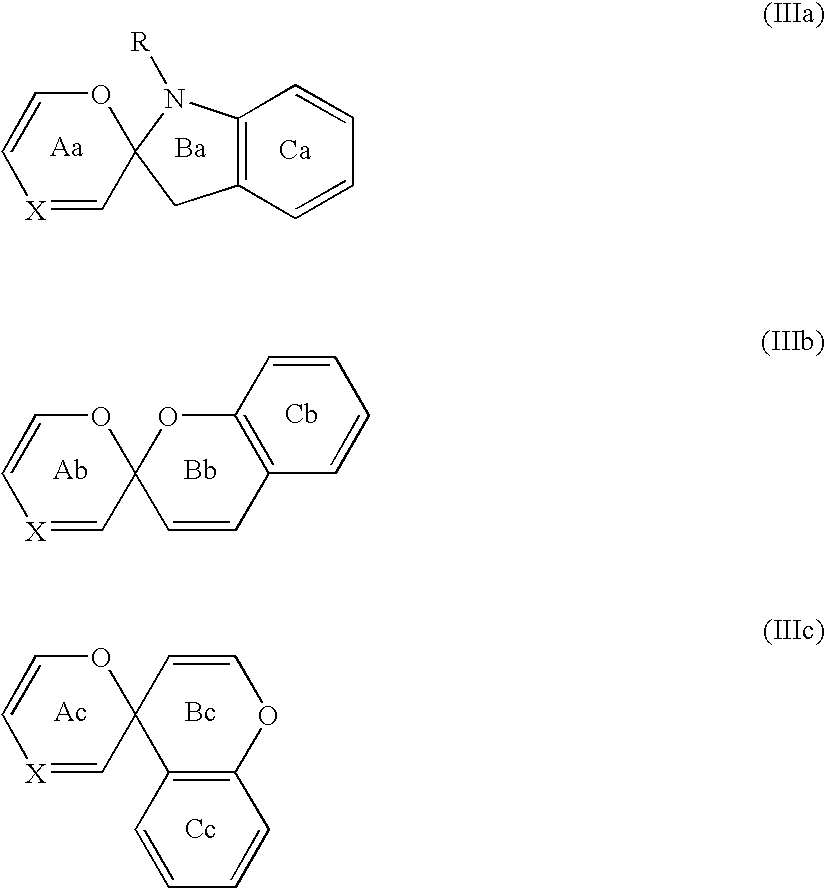Lithographic printing plate precursor and lithographic printing method
a technology of lithographic printing plate and precursor, which is applied in the direction of photosensitive materials, auxiliaries/base layers of photosensitive materials, instruments, etc., can solve the problems of inability to use in image recording with infrared lasers, inability to use infrared laser materials, and inability to achieve image strength (adhesion with a support) extremely weak, so as to improve the visibility of printing plate and improve the aging stability of colored images. , the effect o
- Summary
- Abstract
- Description
- Claims
- Application Information
AI Technical Summary
Benefits of technology
Problems solved by technology
Method used
Image
Examples
example
[0333] The invention will be described more specifically with referring to examples, but the invention is not limited thereto.
Manufacture of Support:
(1) Support A
[0334] For removing the rolling oil of the surface, an aluminum plate having a thickness of 0.3 mm (material 1050) was subjected to degreasing treatment with a 10 mass % sodium alminate aqueous solution at 50° C. for 30 seconds, and after degreasing the aluminum surface was subjected to brush-graining with three nylon brushes planted with hairs having a hair diameter of 0.3 mm and a suspension of pumice stone and water of a median diameter of 25 μm (the specific gravity: 1.1 g / cm3), and the surface of the plate was thoroughly washed with water. The plate was immersed in a 25 mass % sodium hydroxide aqueous solution at 45° C. for 9 seconds for etching, and then washed with water. After water washing, the plate was further immersed in a 20 mass % nitric acid aqueous solution for 20 seconds, followed by washing with water...
example 11
[0346] The image-recording layer coating solution having the composition shown below was coated on support (a) with bar coating, dried at 100° C. for 60 seconds in an oven, whereby an image-recording layer having a dry coating weight of 1.0 g / m2 was formed, thus lithographic printing plate precursor (11) was obtained.
[0347] The image-recording layer coating solution was prepared by the mixture and stirring of the photosensitive liquid (11) and microcapsule liquid (2) shown below just before coating.
Photosensitive liquid (11)Binder polymer (1) shown above0.147 gPolymerization initiator (1) shown above0.091 gInfrared absorber (1) shown above0.018 gPolymerizable compound0.350 gARONIX M-215 (manufactured byTOAGOSEI CO., LTD.)Fluorine surfactant (1) shown above0.040 gMethyl ethyl ketone0.991 g1-Methoxy-2-propanol7.816 gMicrocapsule liquid (2)Microcapsule dispersion (B)2.397 g(synthesized as shown below)Water2.202 g
Synthesis of Microcapsule Dispersion (B):
[0348] As the oil phase comp...
example 12
[0350] The image-recording layer coating solution having the composition shown below was coated on support (a) with bar coating, dried at 100° C. for 60 seconds in an oven, whereby an image-recording layer having a dry coating weight of 1.0 g / m2 was formed. An image-recording layer coating solution was prepared by the mixture and stirring of photosensitive liquid (12) shown below and microcapsule liquid (1) just before coating.
[0351] Further, protective layer coating solution (1) having the composition shown below was coated on the image-recording layer with bar coating, dried at 120° C. for 75 seconds in an oven, whereby a protective layer having a dry coating weight of 1.0 g / m2 was formed, thus lithographic printing plate precursor (12) was obtained.
Photosensitive liquid (12)Binder polymer (1) shown above0.147 gPolymerization initiator (1) shown above0.091 gInfrared absorber (1) shown above0.018 gPolymerizable compound0.350 gARONIX M-215 (manufactured byTOAGOSEI CO., LTD.)Fluor...
PUM
| Property | Measurement | Unit |
|---|---|---|
| wavelength | aaaaa | aaaaa |
| photosensitive wavelengths | aaaaa | aaaaa |
| pKa | aaaaa | aaaaa |
Abstract
Description
Claims
Application Information
 Login to View More
Login to View More - R&D
- Intellectual Property
- Life Sciences
- Materials
- Tech Scout
- Unparalleled Data Quality
- Higher Quality Content
- 60% Fewer Hallucinations
Browse by: Latest US Patents, China's latest patents, Technical Efficacy Thesaurus, Application Domain, Technology Topic, Popular Technical Reports.
© 2025 PatSnap. All rights reserved.Legal|Privacy policy|Modern Slavery Act Transparency Statement|Sitemap|About US| Contact US: help@patsnap.com



